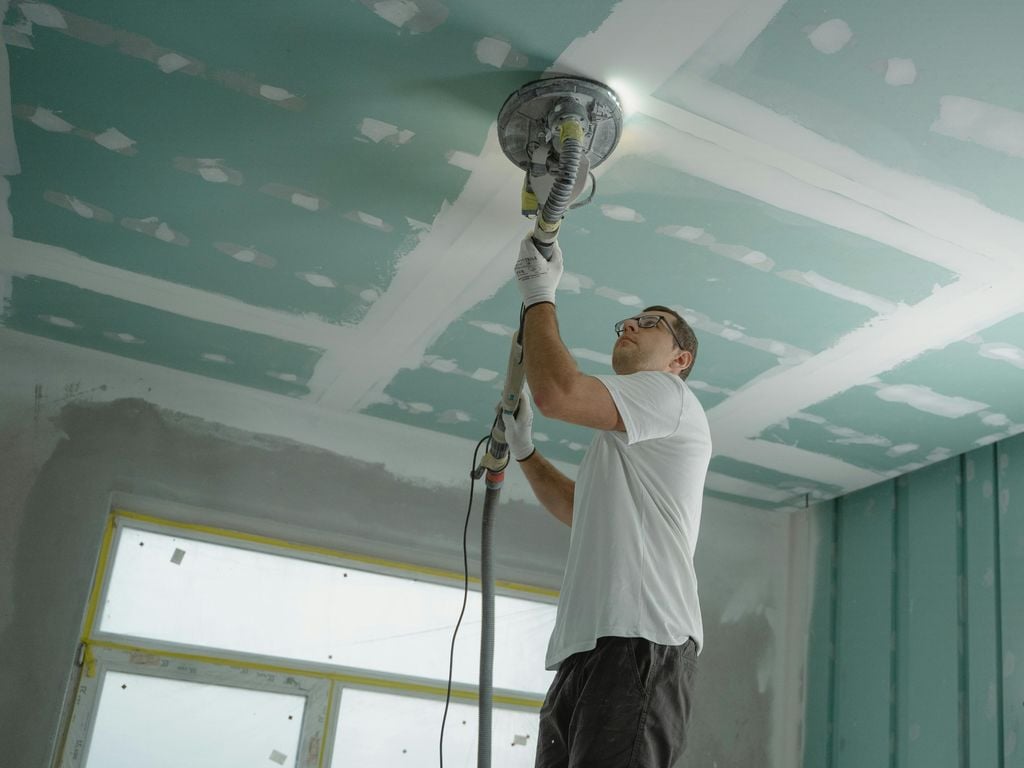Buying a house is exciting, it’s a major life milestone and one of the biggest financial commitments most people ever make. But a beautiful listing and a spotless open house can easily hide costly problems beneath the surface. What looks like a dream home today could turn into a financial headache tomorrow. That’s why it’s essential to learn how to identify and budget for hidden repairs before signing on the dotted line. This guide explains how to uncover major repair risks, set a realistic repair budget, and apply proven home inspection tips for buyers to make confident, informed decisions.
Why spotting hidden repairs matters?
A home can look perfect from the curb, fresh paint, manicured lawn, and stylish updates, but underneath the surface might be outdated wiring, worn systems, or hidden moisture damage slowly weakening the structure.
These issues can affect safety, comfort, and resale value. Because most aren’t visible during a short showing, skipping an inspection or ignoring warning signs can lead to thousands in unexpected repairs.
That’s why every property should be viewed as a potential investment requiring due diligence instead of an emotional purchase.
Buyers who use home inspection tips for buyers early in their search often avoid unpleasant surprises later. Catching red flags before closing gives you the power to negotiate repairs, adjust your offer, or walk away with peace of mind.
The biggest hidden repairs to watch for
Even well-maintained homes can have issues lurking beneath the surface. Below are the most common high-cost repairs every buyer should check before purchase.
a) Foundation and structural issues
The foundation supports the entire house. Even a few small cracks can indicate serious movement or settlement below ground.
What to watch for:
Cracks running horizontally or in stair-step patterns on brick or drywall
Uneven or sloping floors
Doors and windows that stick or don’t close properly
Sagging ceilings or bowed walls
Why it matters: Foundation or structural repairs can range from minor patching to full stabilization, often costing tens of thousands of dollars. Home inspection tips for buyers recommend inspecting for drainage problems, water pooling near the foundation, or evidence of prior patching. Ask if there’s a record of past repairs, as they might conceal ongoing movement.

b) Roof, attic, and exterior envelope
Your roof is the home’s first shield against the elements. Even a tiny leak can cause hidden mold, wood rot, and ceiling stains over time.
Warning signs:
Missing, cracked, or curling shingles
Granules collecting in gutters
Discolored ceilings or water spots inside
Sagging or uneven roofline
Why it matters: Roof replacement is one of the most frequent and expensive repairs. Most roofs last 20–30 years, but poor installation or neglect can cut that lifespan short.
During the inspection, ask your inspector to assess attic ventilation, insulation, and moisture levels. Roofing maintenance checklist references can help you estimate repair costs and lifespan.
c) Plumbing and sewer systems
Water is both essential and destructive. Hidden leaks or aging pipes can cause structural damage, mold growth, and inflated water bills.
Look for:
Stains on ceilings, walls, or floors
Low water pressure or slow drains
Musty odors in bathrooms or under sinks
Signs of outdated plumbing like galvanized steel or polybutylene pipes
Why it matters: Plumbing replacements or sewer line repairs often cost thousands. In older homes, tree roots or collapsed lines may also require excavation.
Home inspection tips for buyers suggest requesting a professional sewer-scope inspection if the home is older or has mature trees nearby. This simple step can prevent major future expenses.
d) Electrical systems and safety hazards
Outdated electrical wiring isn’t just inconvenient it’s a safety hazard that can lead to power outages or fires.
Signs of trouble:
Flickering lights or warm outlets
Two-prong, ungrounded outlets
Breakers that trip frequently
Signs of amateur wiring in the attic or basement
If the house still uses a fuse box or aluminum wiring, upgrading is essential. Check electrical safety standards for homes to understand current electrical code requirements.
A qualified inspector should open the main panel, verify grounding, and confirm the system can handle today’s appliances.
e) HVAC and ventilation problems
Heating and cooling systems control comfort and energy efficiency. When they’re old or poorly maintained, they can cause uneven temperatures and high utility bills.
Indicators of issues:
Unusual noises from vents
Rust, dust, or corrosion on components
Weak airflow or inconsistent room temperatures
Aged or dirty filters and ducts
Request service records to confirm maintenance history. Most HVAC systems last 10–15 years, and replacement costs can run into the thousands. Seasonal HVAC maintenance guide content can help homeowners extend system life after purchase.
f) Water intrusion, mold, and pest damage
Moisture and pests often hide where buyers rarely look, basements, crawl spaces, and attics.
What to check:
Musty odors or visible black spots on walls
Soft flooring or bubbling paint
White mineral residue (efflorescence) on concrete
Mud tunnels or wood shavings from termites
Why it matters: Mold remediation or termite treatment can range from minor repairs to major structural replacement. Ignoring these issues risks both property value and indoor air quality.
A good inspector will test humidity and moisture levels and may recommend specialized testing. Mold prevention and cleanup guide materials can help with prevention and post-treatment care.
Building a repair budget
After identifying potential issues, you’ll need to plan your finances accordingly. Having a repair budget keeps your home affordable and prevents surprises later.
The 1–3 percent rule
Experts recommend setting aside 1–3% of your home’s value annually for regular maintenance and small repairs. For a $350,000 home, that’s about $3,500 to $10,000 each year.
Older homes or those in high-humidity areas may require a higher reserve, up to 5%.
How to estimate costs?
List all repair needs based on your inspection.
Request quotes from contractors for large jobs like roofing or foundation work.
Include secondary costs, such as permits and material increases.
Add a 10–20% contingency for unforeseen issues.
Compare total costs with your available funds before finalizing your offer.
For planning, use a home repair cost calculator to estimate potential expenses accurately.
Example scenario
A $300,000 home inspection uncovers:
Roof replacement in five years – $12,000
Plumbing updates – $8,000
Electrical upgrade – $6,000
Minor moisture repairs – $2,000
Contingency (15%) – $4,500
Total projected repairs: $32,500
By uncovering these costs early, you can negotiate a better deal, request seller credits, or simply plan your budget. Smart buyers apply home inspection tips for buyers to turn findings into leverage rather than setbacks.
Using home inspections strategically
A home inspection is more than a formality, it’s a crucial tool for risk management. Approach it as a fact-finding mission to protect your investment.
Before the inspection
Hire a certified inspector familiar with similar properties.
Ask for a sample report to gauge their thoroughness.
Attend the inspection to see issues firsthand.
Prepare by reviewing pre-inspection checklist for home buyers resources to note concerns in advance.
During the inspection
Walk alongside your inspector and document everything. Ask focused questions such as:
“Is this a safety issue or cosmetic?”
“How soon might this system need repair?”
“Should I bring in a specialist for further evaluation?”
Categorize the results as immediate, medium-term, or long-term priorities.
After the inspection
Read the report thoroughly. Focus on recommendations for “further evaluation” or “annual monitoring” these often point to future expenses.
Next, gather contractor estimates and use them during negotiations. You can request repairs, credits, or a price reduction.
Strong home inspection tips for buyers emphasize written documentation. Always confirm agreed-upon repairs within your purchase contract.
Negotiating your next move
With inspection results and cost estimates in hand, you have three options.
Option 1: Move forward confidently
If repairs are manageable, finalize the purchase knowing what to expect. Schedule essential fixes and budget for the rest over time.
Option 2: Renegotiate
If major repairs are uncovered, request:
A seller credit at closing
A price adjustment reflecting repair costs
Repairs completed before closing
Clear documentation of issues strengthens your case.
Option 3: Walk away
If costs exceed your comfort zone, it’s okay to keep searching. Serious foundation issues, severe mold, or old wiring might make the deal too risky. Review a guide to canceling a home purchase after inspection to understand your rights if you decide to withdraw.
Long-term readiness after buying
Once you own the home, ongoing maintenance is key to avoiding costly surprises.
Create a yearly maintenance schedule
Inspect the roof and gutters twice a year.
Service HVAC systems before summer and winter.
Check foundation for cracks.
Flush water heater and test smoke detectors regularly.
Track these tasks using an annual home maintenance planner for better organization.
Build an emergency fund
Unexpected breakdowns happen. Maintain an emergency fund equal to three to six months of living expenses to cover sudden repairs like plumbing leaks or furnace failures. Use a homeowner emergency fund guide to determine your ideal savings target.
Keep organized records
Maintain detailed logs of inspections, repairs, and upgrades. Documentation builds credibility and increases resale value later.
Consider storing everything digitally through a home maintenance record system for easy access.

Practical home inspection tips for buyers
Keep this checklist handy before your next home tour:
Look beyond décor, focus on structure and systems.
Notice musty odors indicating hidden leaks.
Ensure water drains away from the home.
Inspect attics and crawl spaces for insulation or moisture problems.
Confirm the age of major systems.
Verify permits for past renovations.
Order specialized inspections for pests, radon, or chimneys.
Review property disclosures carefully.
Applying these home inspection tips for buyers empowers you to make confident decisions and protect your investment.
Bringing it all together
Adopting a “repair-ready” mindset means being proactive, not fearful. Every home has imperfections, what matters is how you identify, plan, and manage them.
With professional inspections, thoughtful budgeting, and informed negotiation, you can protect both your finances and peace of mind. By focusing on long-term value instead of short-term appearances, you set yourself up for lasting stability and comfort. Using trusted home inspection tips for buyers gives you the tools to buy smarter and build a home that’s truly ready for the future.
Ready to Find Your Repair-Ready Home?
Don’t let hidden fixes catch you off guard, make your next move with confidence!
Whether you’re buying, selling, or exploring investment opportunities, Jack Ma Real Estate is here to guide you every step of the way. With expert insight into property inspections, repair budgeting, and market trends, Jack ensures every client makes informed and financially sound decisions.
Let’s talk about your real estate goals today!
FAQs
Q1: How long should major systems last when buying?
Roofs with at least 10 years left, HVAC units under 12 years, and updated plumbing or electrical systems within 20 years are ideal benchmarks.
Q2: Should I attend the inspection?
Yes. Being present lets you ask questions and understand issues firsthand.
Q3: What if the inspector finds big problems?
You can renegotiate, request credits, or cancel the contract if the costs outweigh the value.
Q4: How much should I save for repairs?
Keep 1–3% of the home’s value for maintenance each year, plus extra for large replacements.
Q5: Do new homes still need inspection?
Absolutely. Even new builds can have drainage, insulation, or installation errors. An inspection ensures quality before warranties expire.


